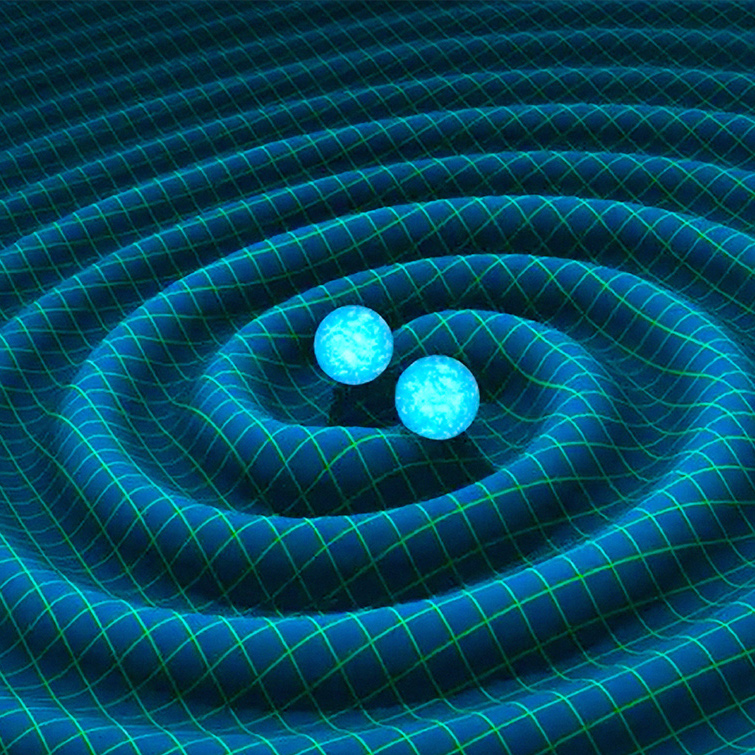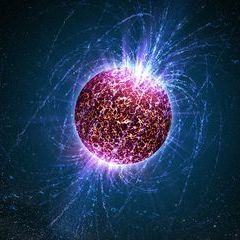Research
We investigate various phenomena related to strong gravitational sources such as black holes, neutron stars, and binaries thereof - that can be used to turn these objects into cosmic labs, where matter in extreme conditions, the very foundations of Einstein's theory of gravity, and even particle physics can be put to the test.
We are exploring some outstanding, cross-cutting problems in fundamental physics: the physics of neutron stars, the limits of classical gravity, the nature of black holes and of spacetime singularities, the existence of extra light fields, and the effects of dark matter near compact objects.
We are members members of the COST Action ”CA 16104 Gravitational waves, black holes and fundamental physics (GWverse)”, of the “Amaldi Center for gravitational physics and astrophysics” at Sapienza, and of the INFN Specific Initiative TEONGRAV - Gravitational Wave Sources.
We are also part of the LISA Consortium and of the Einstein Telescope Collaboration.
1. Gravitational-wave modelling and phenomenology
|
dda
|
aa |
The landmark detection of gravitational waves emitted by black-hole and neutron-star binaries has opened a new era in physics, with countless implications for astrophysics, fundamental physics, and cosmology. However, the enormous scientific potential of gravitational-wave physics cannot be entirely fulfilled without developing new theoretical models for strong-gravity effects at various level. Our research topics in this broad area include:
|
2. Neutron star physics
|
d
das |
aa |
Neutron stars are natural laboratories to test physics under extreme conditions which are difficult to reproduce in Earth-based laboratories on in other astrophysical environments. Gravitational wave and electromagnetic signals emitted by binary mergers or accreting neutron stars, harbour the potential to study the behavior of matter at supra-nuclear densities, and to constrain the star’s equation of state which is, nowadays, still uncertain. Our group is actively involved in modelling the structure and the emission of neutron stars, as isolated and binary sources, and studying their rich phenomenology to put constraints on the equation of state of ultradense matter. We are particularly interested to develop new mathematical techniques and data analysis strategies which allow to extract precise information on the stellar equation of state. Projects in which we are currently involved include:
|
3. Tests of gravity and of the nature of compact objects
|
|
aa |
Current and future gravitational wave detectors provide high precision observations of astrophysical phenomena around relativistic compact objects. These offer a new arena to study the features of the strong gravitational fields in their surroundings, and to test the pillar of General Relativity (GR). Our group is largely involved in many projects related to strong gravitational events, which aim to understand whether Einstein’s theory is correct in extreme regimes, if black holes and neutron stars are the only species of compact objects in the Universe, or which is the fate of spacetime singularities inside event horizons. We are active in modelling both single and binary sources beyond GR, studying their structure and gravitational wave phenomenology. We are especially interested in fully dynamical environments, as binary coalescences, where gravity features a genuine non-linear regime, both in the inspiral and in the merger phases. Some of the topics we are currently active on include:
|
4. Gravity & astroparticle physics
|
|
aa |
The nature of dark matter is unknown but we know that it interacts gravitationally. Therefore, the gravitational interaction in the strong-field regime can be also used to probe the physics beyond the Standard Model and to investigate possible dark matter candidates, regardless of their feeble coupling to the ordinary matter and fields. Topics we are currently investigating include:
|

 k
k kk
kk
 kk
kk